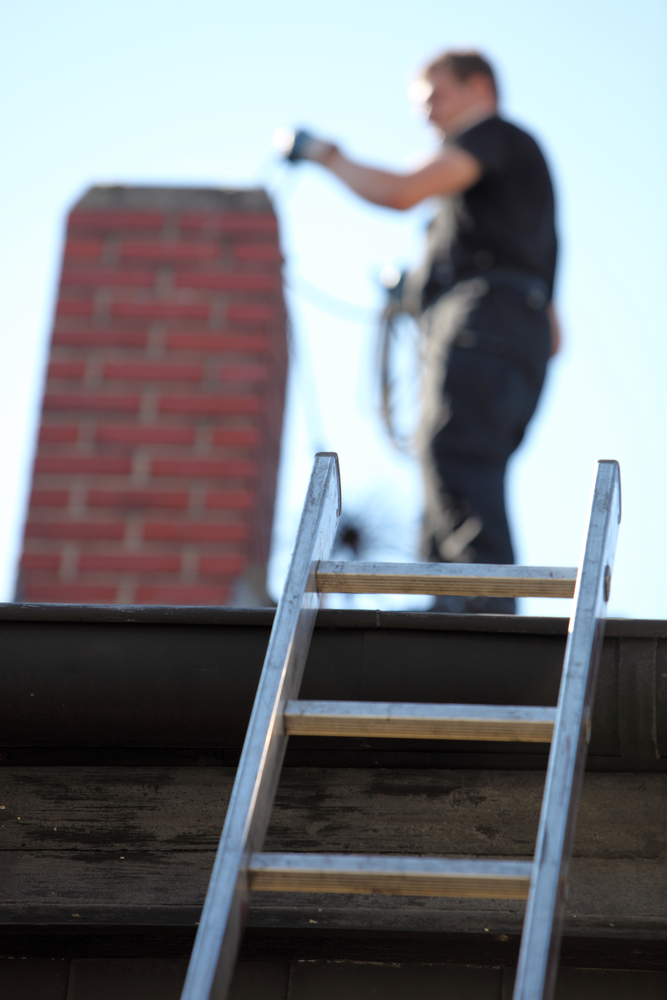Professional Chimney Sweeping: Book Your Next Appointment With Our Certified Techs
Homeowners often take a “hands-off” approach to their chimney. After all, the majority of a chimney is out of sight – and out of sight means out of mind, right? Well, we sure hope not. Your chimney should very much be on your mind, especially if it’s been a long time since you had it inspected or swept (or if you can’t recall ever having done so).
Remember that your chimney isn’t just an accessory to your fireplace – it is the vehicle that carries away toxic and dangerous flue gases out of your fireplace, wood stove, or furnace. It’s what helps your fireplace remain efficient, all while keeping the air inside your home breathable. In short, if you use your fireplace or if you’ve just moved into a new home, you will need to have your chimney inspected and/or swept to make sure that it is safe and working well.
We recommend that homeowners have their chimney inspected annually by one of our professional chimney sweeps to determine whether or not it needs sweeping or repairing, or if there are any other pressing issues. Call us today to schedule, or you can book online through our website.

What Does a Chimney Sweep Do?
Think of having your chimney “swept.” A common picture that comes to people’s mind is Dick Van Dyke in Mary Poppins with his long-handled bristled brush and soot-smudged face. Though we do still use some old-world tools and techniques to clean chimneys today, we rely most heavily on modern methods to inspect, clean, line, waterproof, and repair chimneys. And no worries – they all allow for a mess-free process too.
The typical chimney sweep takes a little over an hour and involves the following:
- The sweep will start by protecting your home from soot and dust, draping drop cloths or tarps over your furniture and blocking off the fireplace opening.
- Next, a high-powered industrial vacuum is inserted up the chimney, starting the process of removing all excess soot and debris.
- While the vacuum is going, the sweep uses a variety of brushes to thoroughly dislodge debris and dust from all parts of the chimney, from the firebox to the damper.
- During the cleaning process, your sweep will also check to see that your damper is assembled and installed correctly, and that your mortar, brickwork, and chimney crown is in good condition.
- Your sweep may lastly conduct a smoke test (at an additional fee), lighting a small fire in your heating appliance to see that your chimney is venting properly.
How To Know if You’re at Risk of a Chimney Fire
One of the biggest reasons regular chimney sweepings are so important is to minimize the risk of experiencing a chimney fire. Chimney fires are notorious for being terribly destructive. In fact, every year, hundreds of houses burn down because of dirty chimneys and chimney fires.
The cause of almost all chimney fires is accumulated creosote, which is the highly-flammable substance that builds up inside your chimney or liner as a byproduct of burning wood. Creosote can accumulate more quickly if you practice poor burning practices or if you have a burning appliance or stove that’s not working well or connected properly.
All that said, not all chimney fires are immediately obvious. Any of the following could be signs that your chimney is catching fire or has in the past:
- A loud cracking and popping noise
- Dense smoke
- An intense burning smell
- Honeycombed creosote
- Flue/masonry damage
- Discolored or warped chimney cap
Remember that clean chimneys don’t catch fire. Have a certified chimney sweep inspect your solid fuel venting system annually and clean and repair it, when needed. Fires caused by dirty chimneys are all fires that could have been prevented. It is also possible that insurance companies won’t pay your claim if they find you were negligent in maintaining your chimney.
We’re Here To Keep You Safer
Our goal at Ace Chimney Sweeps, Inc. is to provide sound advice and information about your heating element installation and educate you about safe fuel-burning practices. Have questions or want to schedule a sweep of your chimney? Call us at 410-392-4596! You can also reach out to us online to schedule.
Chimney inspections are vital to the safety and efficiency of your fireplace system. It is one of our most frequently scheduled chimney services.
